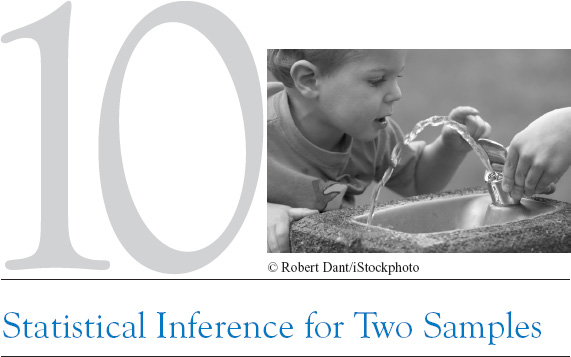
The safety of drinking water is a serious public health issue. An article appeared in the Arizona Republic on May 27, 2001, that reported on arsenic contamination in the water sampled from 10 communities in the metropolitan Phoenix area and 10 communities from rural Arizona. The data showed dramatic differences in the arsenic concentration, ranging from 3 parts per billion (ppb) to 48 ppb. There are some important questions suggested by this article. Is there a real difference between the arsenic concentrations in the Phoenix area and in the rural communities in Arizona? How large is this difference? Is it large enough to require action on the part of the public health service and other state agencies to correct the problem? Are the levels of reported arsenic concentration large enough to constitute a public health risk?
Some of these questions can be answered by statistical methods. If we think of the metropolitan Phoenix communities as one population and the rural Arizona communities as a second population, we could determine whether there is a statistically significant difference in the mean arsenic concentration between the two populations by testing the hypothesis that the two means, say, μ1 and μ2, are different. This is a relatively simple extension to two samples of the one-sample hypothesis testing procedures of Chapter 9. We could also use a confidence interval to estimate ...
Get Applied Statistics and Probability for Engineers, 5th Edition now with the O’Reilly learning platform.
O’Reilly members experience books, live events, courses curated by job role, and more from O’Reilly and nearly 200 top publishers.

